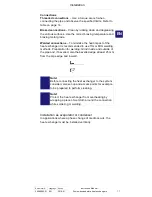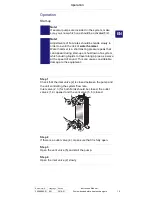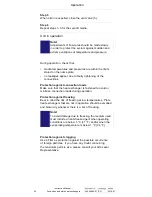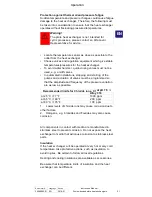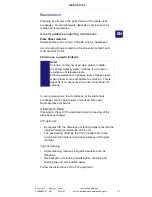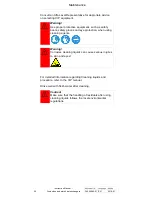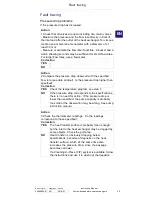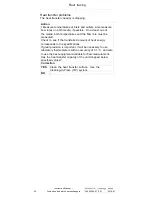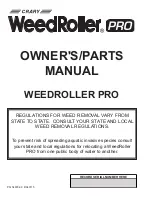
Maintenance
Maintenance
Cleaning can improve the performance of the plate heat
exchanger. Cleaning intervals depends on factors such as
media and temperatures.
General guidelines regarding maintenance
Plate Sheet material
Stainless steel can corrode. Chloride ions are hazardous.
Avoid cooling brines containing chloride salts as NaCI and,
most harmful, CaCI
2
.
Chlorine as a growth inhibitor
Note!
Chlorine, commonly used as a growth inhibitor
in cooling water systems, reduces the corrosion
resistance of stainless steels.
Chlorine weakens the passive layer of these steels
making them more susceptible to corrosion. This is
dependent on exposure time and concentration of
chlorine.
In every case where the chlorination of the plate heat
exchanger cannot be avoided, consult an Alfa Laval
Representative for advice.
Cleaning-In-Place
Cleaning-In-Place (CIP) equipment permits cleaning of the
plate heat exchanger.
CIP performs:
• By regular CIP, the dissolution of fouling helps to restore the
original thermal performance of the unit.
• The passivating effect by the CIP procedure can help
to maintain the original corrosion resistance of the plate
material.
Type of cleaning:
• Acidic cleaning removes inorganic deposits such as
limestone.
• Neutralization of cleaning liquids before draining and
fl
ushing the unit with potable water.
Follow the instructions of the CIP equipment.
Document ID
Language
Edition
34566980-01 EN
2018-01
Instruction Manual -
Fusion-bonded plate heat exchangers
23
EN
Содержание AlfaNova 14-76, AXP AN
Страница 2: ...www alfalaval com fhe manuals ...
Страница 6: ......









